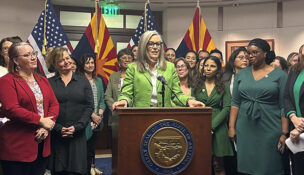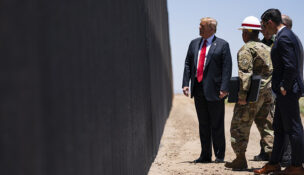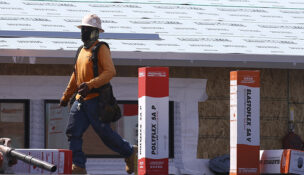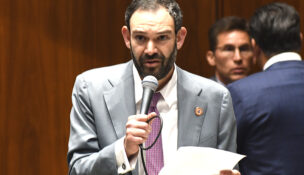Arizona population to double in 30 years, UofA researcher says
Arizona Capitol Reports Staff//October 6, 2006//[read_meter]
Arizona population to double in 30 years, UofA researcher says
Arizona Capitol Reports Staff//October 6, 2006//[read_meter]
A University of Arizona economic researcher pulled out his crystal ball — and some U.S. Census data — and looked into Arizona’s future.
He says he saw a lot — a lot of growth involving a lot of people.
Arizona’s population will double in the next 30 years, with the Phoenix area essentially merging with metro Tucson to become one urbanized complex, with significant development from as far as Sierra Vista in southeastern Arizona to Kingman in the northwest, said researcher Marshall Vest.
The state will add roughly 8.5 million residents by 2036, adding to the current 6.2 million and reaching 14.6 million, said Mr. Vest, director of the Business Research Center of the Eller College of Management.
Metro Phoenix now has 4 million people and will rise to 9.7 million by 2036, while the Tucson area’s current population of just under 1 million should hit 1.7 million, Mr. Vest wrote in the October issue of Arizona’s Economy, published by the center.
Mr. Vest said current definitions for the two metro areas will change to include surrounding counties as developable land is exhausted. “As we already see, the area along (Interstate 10) connecting the two cities will develop quickly,” he said.
Mr. Vest noted that Virginia Tech researcher Robert E. Lang last year released a study identifying Phoenix and Tucson as one of 10 “megapolitan areas” that will have at least 10 million people by 2040 and are combinations of two or more metropolitan areas with transportation, business and cultural links.
What draws folks here
Factors driving the population growth will include several already at work, including both migration from northern and eastern states as well as a “rebound” from California, retirees’ attraction to Arizona’s low cost of living and abundant sunshine, illegal immigration from Latin America and high birth rates, Mr. Vest said.
“The challenge to plan for and accommodate the tremendous growth yet to come has never been greater. It is in this sense that Arizona likely will continue to be ‘overpopulated,’ and its economy and infrastructure ‘underdeveloped,’” Mr. Vest wrote.
The working age population will account for 59 percent of the total, down from 66 percent today, while the percentage of the population at age 65 and over will be 20 percent, up from 12 percent today, Mr. Vest said.
Approximately 44 percent of the population will be employed, roughly the same as now, but per-capita income will slip in comparison to the national average, Mr. Vest wrote.
He projected that economic areas growing more rapidly than the overall rate will include business and professional services, health care, social services, transportation, hospitality and trade, while those lagging will include manufacturing, government, utilities, mining, construction and financial activities.
Mr. Vest said his projections are the “most likely outcome” but that they could be underestimates with a stronger national economy and increased immigration or overestimates if those same variables swing the other way.
In any event, Mr. Vest said, the scale of growth underscores the need for regional planning in such matters as water and transportation.
“What this research makes clear is that the entire state is part of one globally connected economic system with Phoenix as the central city,” he wrote.
Copyright 2006 Associated Press. All rights reserved. This material may not be published, broadcast, rewritten or redistributed.

















